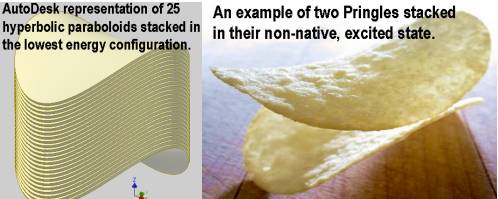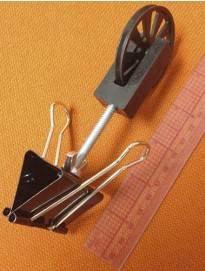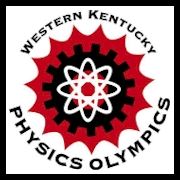2016 Physics Olympics
Exploration
Overview
 The WKU Department of Physics & Astronomy is celebrating the spirit and challenges
of Exploration by inviting high schools to send teams of four to compete in the 2016
Western Kentucky Physics Olympics. This half-day competition, held Saturday, February
20 in Thompson Center, Central Wing on WKU's Bowling Green campus, consists of a pentathlon
of challenging problem-solving activities that reward teamwork, communication and
creativity.
The WKU Department of Physics & Astronomy is celebrating the spirit and challenges
of Exploration by inviting high schools to send teams of four to compete in the 2016
Western Kentucky Physics Olympics. This half-day competition, held Saturday, February
20 in Thompson Center, Central Wing on WKU's Bowling Green campus, consists of a pentathlon
of challenging problem-solving activities that reward teamwork, communication and
creativity.
The 2016 Physics Olympics competition will commence with two activities that involve competitors arriving at the event ready to compete with devices they have designed, constructed, and tested. Mission Procurement requires each team to design, construct, and use a package to safely transport "expeditionary supplies" through harrowing circumstances. This year's "Calculation / Communication Challenge" is titled Cavern Mapping and will require each team to divide into pairs, with one pair creating directions to locate deposited caches of specimens and the other pair following the directions to retrieve the caches. For the Zip Line Relay event, each team constructs a harness to safely transport their four biogenetic specimens from the discovery site to the staging camp. Steady As She Goes, the "On-the-Spot Activity" for this Exploration themed competition, will test each team's ability to safely load specimens for transport. The "Order-of-Magnitude Quiz" will remain cloaked in secrecy until the day of the event.
Do-Ahead Event: Mission Procurement
The first step of any exploration is to identify and acquire the resources required
for the expedition. The specific resource being staged for this event is a pair of
Pringles chips. The object of this Do-Ahead Project is to design the lowest mass and
lowest volume container in which two Pringles truncated hyperbolic paraboloids can
arrive safely, to be received in an orientation other
than their normal stackable configuration, after being sent through the U.S. Mail
from your local post office to this address:
| Western Kentucky Physics Olympics c/o Rick Patterson P.O. Box 400325 University of Virginia Astronomy Charlottesville, VA 22904-4325 |
 |
1. Both Pringles must be unaltered in any fashion.
2. Pack the Pringles in the smallest container possible (smallest volume, smallest mass). Within the package, enclose the Pringles in a sealed ziplock-style plastic bag from, which the Pringles can be easily removed by the judges.
3. The size of the package must be bigger than 5 inches by 3 inches (according to US Post Office regulations) and smaller than 6 inches by 5 inches by 8 inches (such that it can fit into a standard rural-style mailbox). Using the U.S. Postal Service, mail the Pringle to the designated address for arrival on or before Friday, February 19th, 2016. Late deliveries will not be judged.
4. A judge will unpack and remove the Pringles from all containers and wrappings. The Pringles must be unblemished, naturally colored, with no cracks or damage evident. Pringles which are damaged in the normal process of removing them from their containers/wrappings will be judged as having failed to survive.
5. The two Pringles must arrive oriented in some fashion other than their trademark stackable and nested configuration. Shipments that arrive with the two Pringles in the natural configuration will all ranked below those that arrive in an excited state.
6. Each team's score is calculated as the sum of points awarded for the Pringle's survival (0 to 50) and the product of volume (cm3) and mass (kg). In case of tie scores, the amount of postage will be considered (less is better). The team with the lowest score wins.
7. All contestants will ensure that their entry works through the application of
physics principles and generally follows the spirit of the competition. Communication/Calculation
Challenge: Cavern MappingYour team will be asked to divide into two groups. Two of
you will be provided with maps of the “cavern” area, a pencil, clipboard, and eight
“specimens” to be deposited for later retrieval. This pair’s task is carefully record
their progress and create a record for their other two teammates to
follow for rapid and accurate recovery of the cached specimens.
Do-Ahead Event: Zip Line Relay
 |
The inaccessibility of your field site is what makes this an exploration rather than a simple errand. Retrieving the specimens was a critical step, now you have to get them back to the expedition’s base camp by safely conveying them one at a time via a zip line. The goal for this relay event is to safely transport the samples one at a time down the zip line in the shortest amount of time. |
1. Each team shall design and construct a harness that attaches to the zip line trolley provided by the organizers, such that Grade A Large chicken eggs can be safely carried down the zip line and removed undamaged at the bottom end. The mass of the harness must not exceed 75 grams. No harness exceeding the mass limit will be allowed to compete. The harness constructed by each team must be impounded by 8:30 on the morning of the competition. No alterations to the harness are permitted after 8:30 a.m.
|
2. The zip line cable will consist of monofilament fishing line. Two parallel courses will be set up for the competition, with each team allowed one complete relay on each course. The line will start between 2.0 and 2.5 meters off the level floor and be connected at its lowest end between 1.0 and 1.5 meters above the floor. 3. For the competitions, the organizers provide a single trolley on each course to be used by all teams. A close duplicate trolley will distributed to each registered team, to allow experimentation before the actual competition. 4. Each teams harness will be attached to the trolley solely via the normal function of the medium sized binder clip’s spring action. |
 |
5. The timing begins when the first egg is removed from the carton at the top end of the course. Team member #1 is to carry the egg from the carton, secure it in the team’s harness, and send it down the zip line. At the other end of the zip line, team member #3 must wait for the cargo to pass the marked point before stopping it, by any means, removing the egg from the harness, and placing it into the carton at the low end of the course. At than point, team member #3 must take the zip line trolley and harness back up the cable to the top of the course. The process is repeated, with team member #2 loading and sending the second egg to be received by team member #4, then with team member #3 loading and sending the third egg to be received by team member #1, and finally with team member #4 loading and sending the fourth and final egg to team member #2. The timing ends when the fourth egg (or at least the majority of its remains) is placed into the carton at the low end of the course.
6. The teams will be ranked by the transfer time of all four eggs in an undamaged state, fastest first. Teams with damaged, but intact eggs will be ranked next. Teams with at least one egg that did not survive the transfer will be ranked behind teams whose eggs all survived intact.
7. All contestants will ensure that their entry works through the application of physics principles and generally follows the spirit of the competition.
Impromptu Team Activity: Steady As She Goes
Activity is the key word for this competition, with the goal being for each team to achieve the desired results as quickly as possible. The instructions regarding this event are not released until it begins, so everyone is on equal footing. The situation is designed to reward teamwork and common sense thinking as well as knowledge of physics. Every team will come away with smiles and good memories regardless of how well they master the particular challenge.
Order-of-Magnitude Quiz (also known as Fermi Questions)
Arrive at a reasonable approximation for the value of a complex situation with very
little to no information available to directly compute the answer. In this quiz, the
contestants will need to quickly make assumptions for values to use in simple calculations
in order to arrive at the "correct" answer, stated as the power of ten of the number
that fits the accepted value. Teams will receive 9 questions to complete within 15
minutes. The teams can divide the work in any way they see fit, but only one answer
per question per team will be accepted. Answers will be judged according to how many
orders of magnitude the team's answer is from the judge's solution. The lowest score
wins -- 0 points awarded for the answer accepted by the panel of judges, with 1
point scored per order of magnitude from the accepted value.
Examples of Order-of-Magnitude Quiz questions include:
How many electrons enter the starter motor when a new, full-sized pickup starts?
How many times would a tire of a Ford Taurus rotate when driven from NYC to LA?
Estimate the number of gallons of gasoline used annually by all the cars in the USA.
A community of faculty, staff, and students engaged in better understanding the physical world.
Some of the links on this page may require additional software to view.


